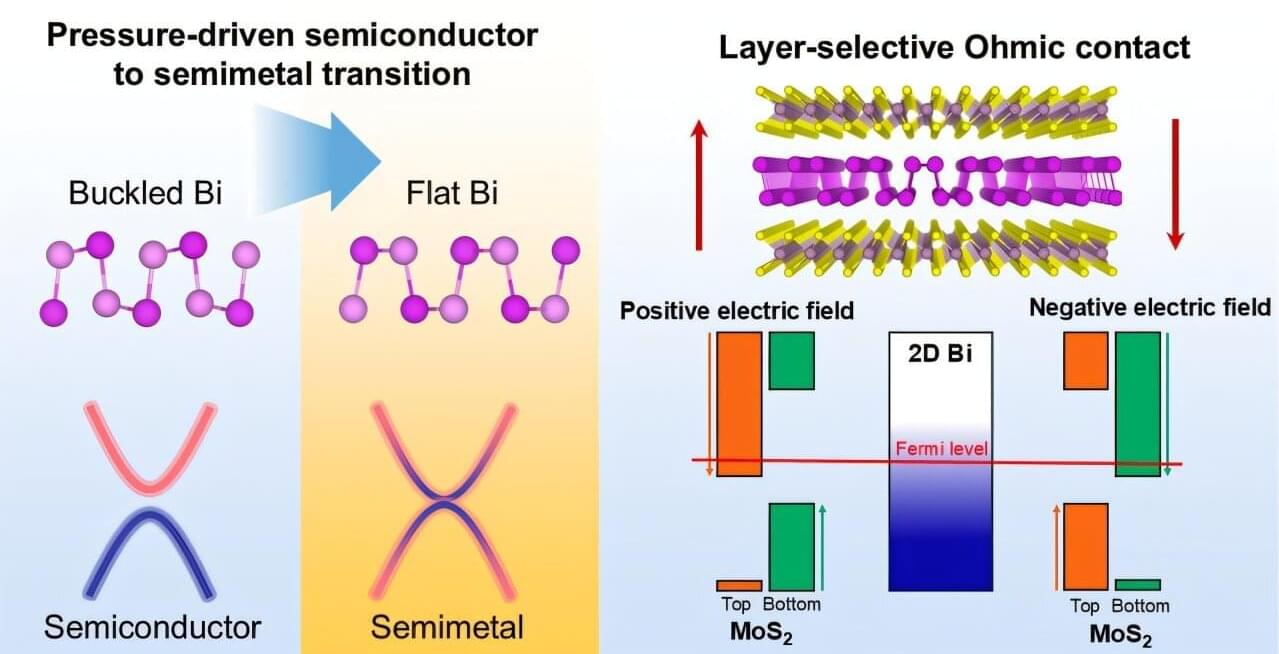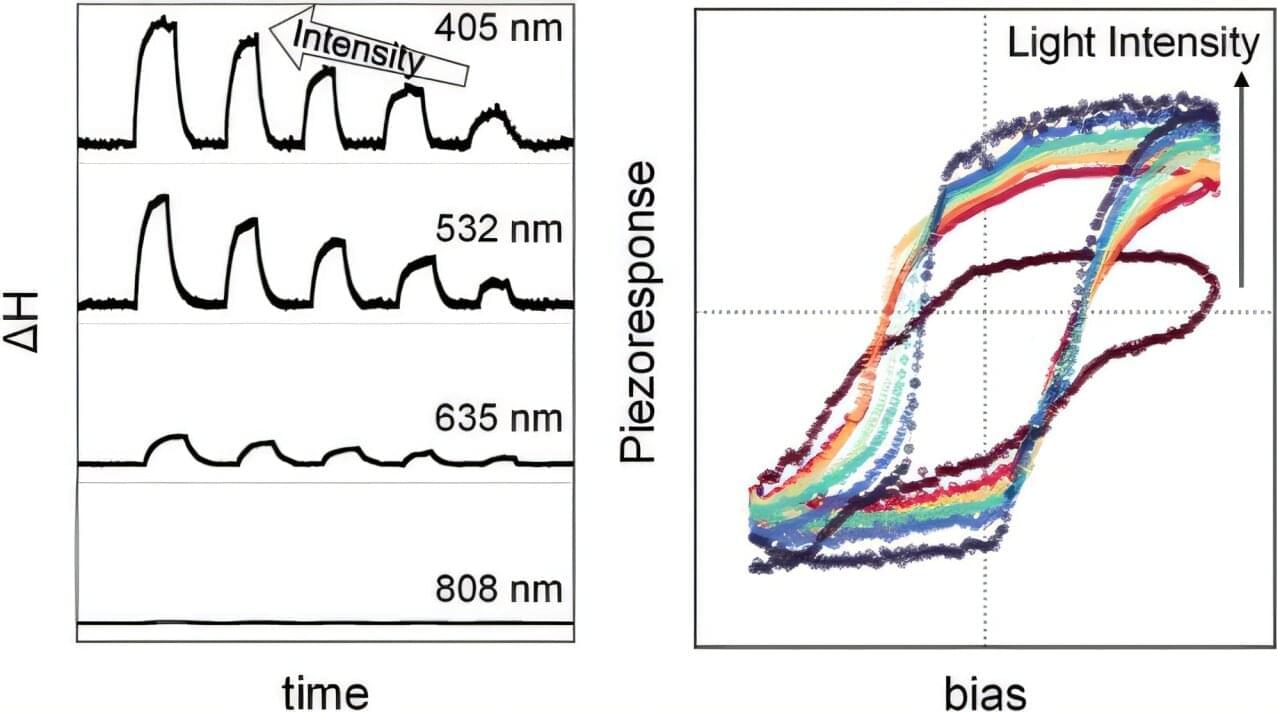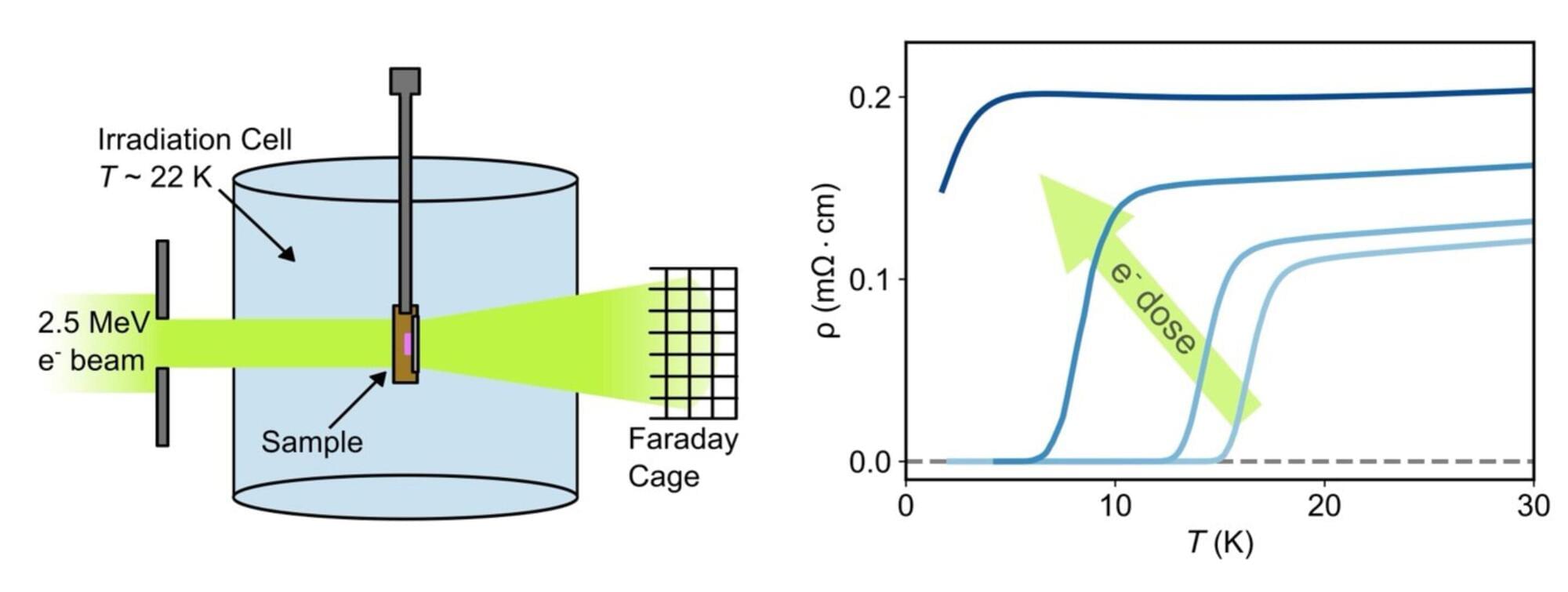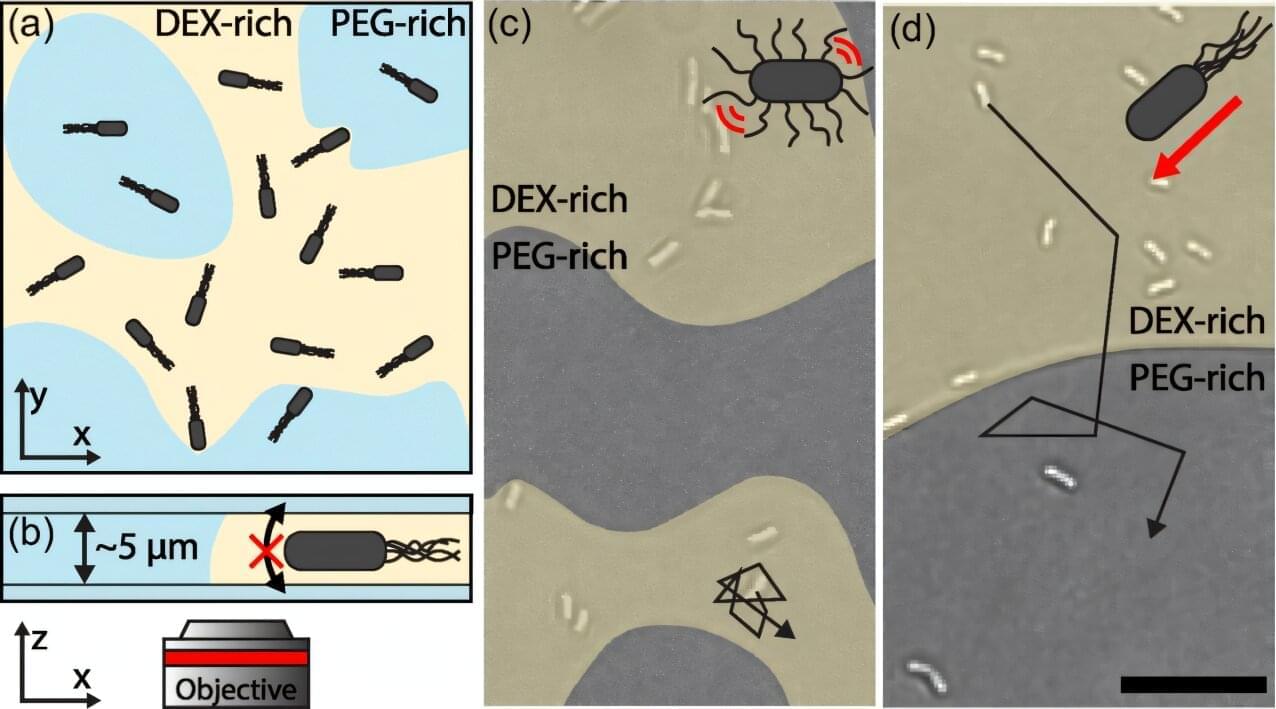Two-dimensional (2D) materials, sparked by the isolation of Nobel-prize-winning graphene in 2004, has revolutionized modern materials science by showing that electrical, optical, and mechanical behaviors can be tuned simply by adjusting the thickness, strain, or stacking order of such 2D materials. From transistors and flexible display to neuromorphic chips, the future of electronics is expected to be significantly empowered by 2D materials.
In a new study published in Nano Letters titled “Pressure-Driven Metallicity in Ångström-Thickness 2D Bismuth and Layer-Selective Ohmic Contact to MoS2,” researchers led by SUTD have discovered that a gentle squeeze is enough to make bismuth—one of the heaviest elements in the periodic table—switch its electrical personality.
Using state-of-the-art density functional theory (DFT) simulations, the team showed that when a single layer of bismuth, only a few atoms thick, is compressed or “squeezed” between surrounding materials, the atoms reorganize from a slightly corrugated (or buckled) structure into a perfectly flat one. This structural flattening, though subtle, has dramatic electronic consequences: it eliminates the energy band gap and allows electrons to move freely, turning the material metallic.








